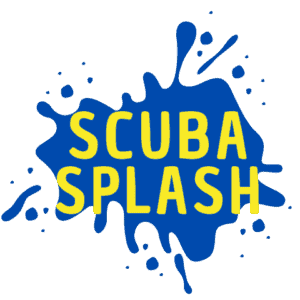The Bahamas is an archipelago of 700 islands in the Caribbean that is known to be a paradise for water lovers. The incredible reef systems and formations, shipwrecks, interesting currents, and drop-offs make for a memorable dive expedition.
The waters are warm, visibility is always great and it’s a year-round divers delight. With so many islands to explore and a seemingly endless list of dive sites, it might be hard to choose which to check out. Luckily for you, I have assembled a list of my personal top 11 favorite sites that just can’t be missed.
1.) Cat Island: Dozens of dive sites including tunnels, basins, and shipwrecks
2.) Dean’s Blue Hole: Second deepest blue hole in the world
3.) The Washing Machine: Ocean current that tumbles you head over heels
4.) Tiger Beach: World-class shark diving site
5.) Andros Wall: Top-rated wall dive
6.) James Bond Wrecks: 2 wrecks that were used in the filming of James Bond movies
7.) Green Turtle Cay: Coral pillars, tunnels, and caverns
8.) Fish Hotel: Schools of fish swimming through reef
9.) Sugar Wreck: Sailing shipwreck
10.) Victory Reef: Best dive site in the Caribbean
11.) Thunderball Grotto: Underwater cave where two James Bond movies filmed
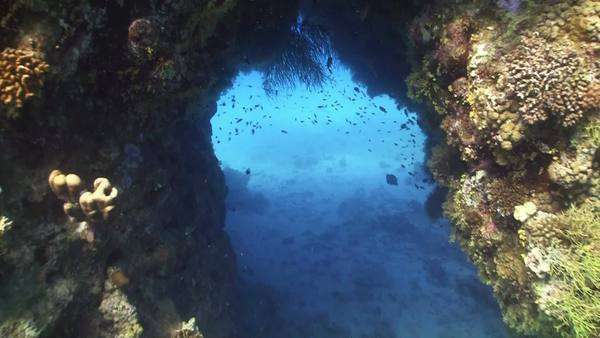
Cat Island
Cat Island, Bahamas
Skill Level: Beginner and up
Expect to See: Dolphins, rays, reef sharks, oceanic whitetip sharks (April-May), turtles, grouper, seahorses, lobsters, coral reef, sea sponges, tropical fish, shipwrecks
Water Temperature: 75-88 F (24-31 C)
Cat Island is a fantastic dive location for all levels. The waters are warm and clear nearly all year round. The island itself is 4 miles wide and 50 miles long with plenty of accommodation for all budgets. The island has 2 airports and is 130 miles south-east of Nassau. It’s very laid back and the best part is that you’ll never feel crowded at any of the islands dive sites.
Cat Island offers dozens of dive sites that are worthy of exploring. Some of those sites include:
- First Basin Wall: 100-220 feet (30-61 m) drop off
- The Tunnels: 30 feet (9 m) coral garden
- Third Basin Reef: Drop-off with sea sponges and black coral
- Blue Hole: 80-100 feet (24-30 m) sinkhole
- White Hole Reef: Limestone basin with coral
- Santa Maria Teresa: 1898 Spanish battleship wreck
There are coral canyons, valleys, swim-throughs, plenty of fish, coral, and of course, reef sharks. There is virtually no current and visibility is always amazing. There are sites for every level of diver and the waters are never crowded.
The south shore reefs are hardly visited and in pristine condition. If you prefer off-the-beaten-path adventures then this is the place for you. Along the south shore reefs, you will discover untouched brain, elkhorn, lettuce, and Georgian coral species. Grouper, tarpon fish, triggerfish, and trumpet fish are found in large numbers and are always closeby.
Oceanic whitetip sharks make an appearance off Cat Island from April through May. Though they are viewed as a top predator and usually first to feast in disaster zones, these sharks are a rarity. Their numbers have drastically decreased by 85-90% since the mid-1990s. The slow-moving solitary shark stays relatively close to the surface of the water as it hunts for food. An advanced diving certification is usually required for this shark dive.
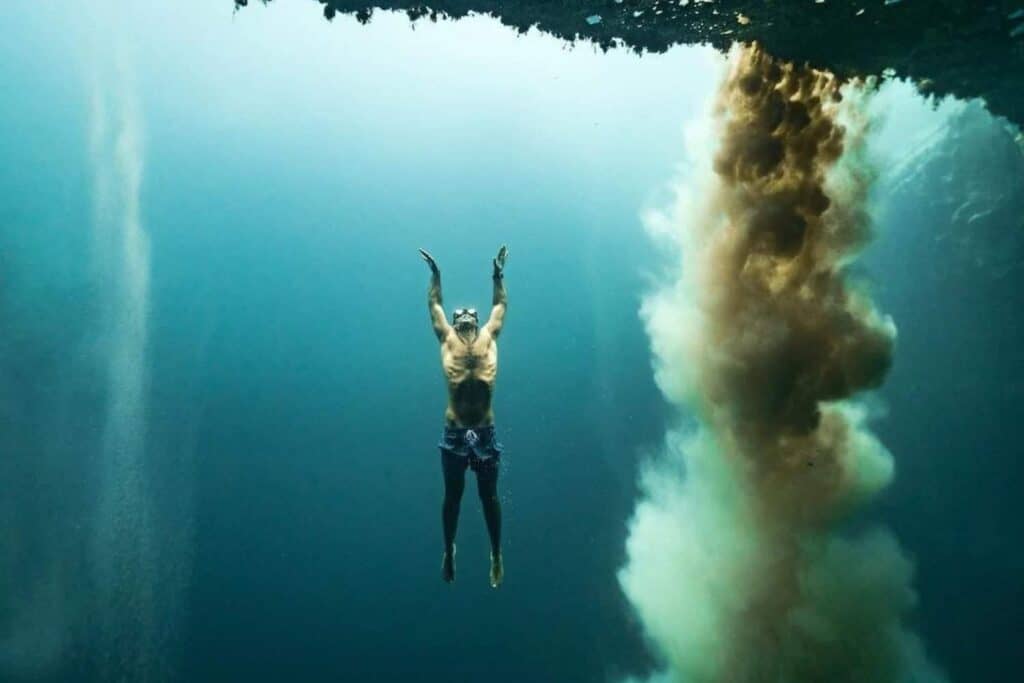
Dean’s Blue Hole
Long Island, Bahamas
Skill Level: Beginner and up
Expect to See: grouper, tarpon, snapper, cavern, overhangs, sandfall
Water Temperature: 75-88 F (24-31 C)
Blue holes are marine sinkholes and there are several examples of them around the world including the ultra-famous Great Blue Hole in Belize. However, Dean’s Blue Hole in the Bahamas is the second deepest known blue hole plunging to 663 feet (202 m) deep.
One alluring element of Dean’s is that the sinkhole is located just 27 feet (8 m) off the shore. This makes the site very easy to get to. Visibility is always amazing here and it can top 115 feet (35 m) on good days. There is no current and is a great dive site for beginners and up.
The entrance of the hole is actually underwater and it resembles a cave. One unique phenomenon is that sand from the ocean actually falls into the hole and creates a waterfall effect only with sand instead of water. A lot of people refer to it as ‘sandfall‘ and it might be one of the only places in the world where this occurs.
There is also an annual freediving competition held here that attracts a massive crowd from all over the world. Spectators, camera crews, and competitors gather to see who or if anyone can beat last year’s record.

The Washing Machine
Exuma Islands, Bahamas
Skill Level: Intermediate and up
Expect to See: reef patch, soft and hard coral, tropical fish, batfish, turtles, nurse sharks
Water Temperature: 75-86 F (24-30 C)
The Washing Machine is probably one of the most unique drift dive experiences you will have. As divers leap into the water, one by one a strong circular tide grabs you and gently tumbles you head over heels. This whirlwind propels divers hundreds of yards through a cut in the reef.
Divers are released after several minutes into a colorful patch reef. Visibility is fantastic and is almost always 100 feet (30 m). The dive begins at 15 feet (5 m) and the tide pulls you to about 40 feet (12 m) depth before releasing you back at 15 feet (5 m) again.
The current can reach up to 3 knots as it speeds through a cut in a reef ledge. If this sounds like too much, don’t worry. You can enter the water through the opposite side where the current is much calmer. You’ll still be able to enjoy the colorful reef head at the end.
There is a guide line that helps keep divers oriented and in the right direction. However, this site is only suggested for intermediate divers because of the unique nature of the dive.
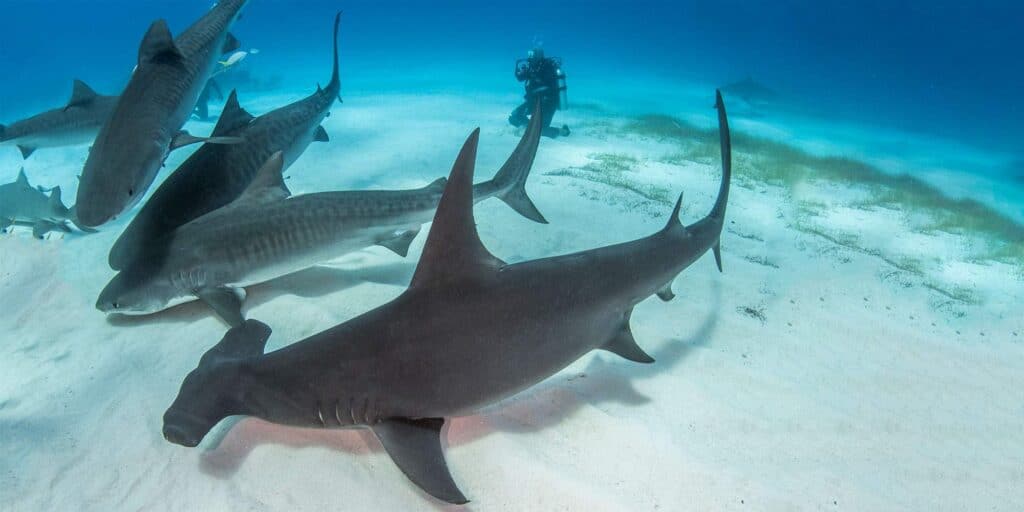
Tiger Beach
Grand Bahama Island, Bahamas
Skill Level: Beginner and up
Expect to See: Tiger, hammerhead, lemon, reef and nurse sharks,
Water Temperature: 72-83 F (22-28 C)
Tiger beach is one of the most renowned shark diving sites in the world. Divers can get up close and personal with several different species of sharks including tiger, hammerhead, lemon, and nurse. Dives are cage-free and offer one of the most intense shark experiences a diver can have.
Legend has it that a local man was diving at Tiger Beach in 2002 and removed a hook from the jaw of a tiger shark. Since then, many sharks have frequented the area with absolutely no aggression or threatening behaviors.
There are said to be only 2 locations in the world that offer cage-free tiger shark diving. One is in South Africa and the other is in the Bahamas. Just about any photo circulating of a tiger shark was probably captured at one of these two sites.
Expect to be over-weighted for this dive as you will spend the majority of the time kneeling on the ocean floor. The maximum depth is 20 feet (6 m) in warm, calm waters. Visibility is wonderful as the waters are crystal clear.
Hammerheads make an appearance from November to late February. Lemon sharks, nurse sharks, Caribean reef sharks, and tiger sharks are here year-round. Chum is used to attract the sharks and divers enter the water once the sharks have arrived.
Avoid wearing or bring any silver/ shiny equipment as this can sometimes be confused for fish. Never turn your back on a shark especially one that is approaching. Local dive shops offer trip options include daily or liveaboards.
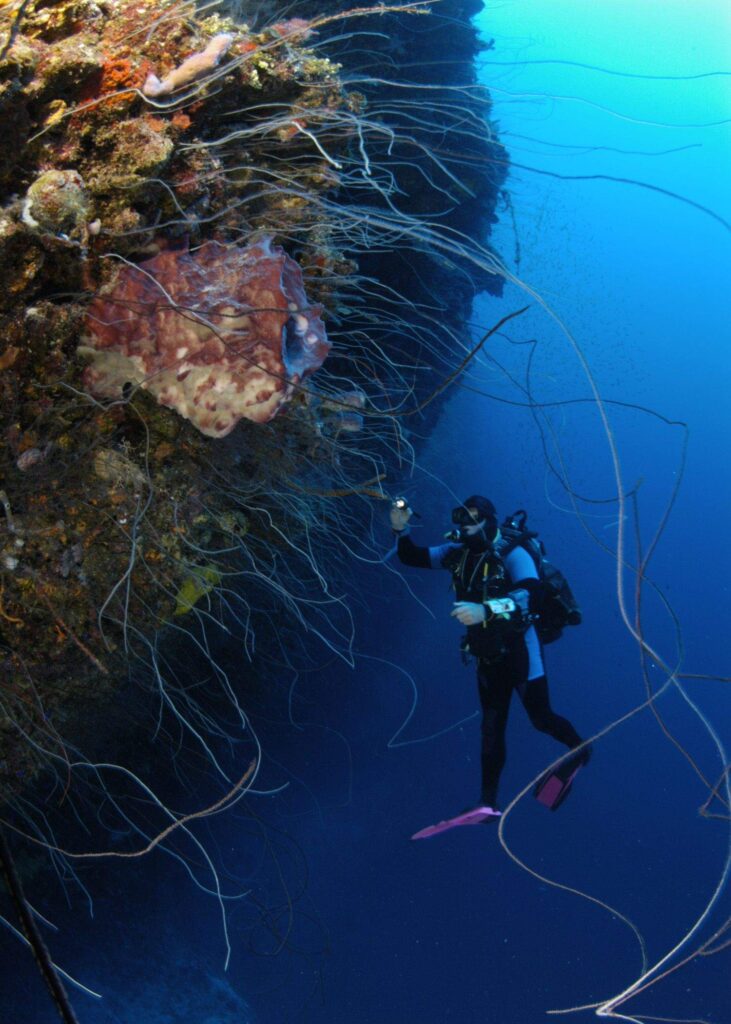
Andros Walls
Andros Island, Bahamas
Skill Level: Advanced and up
Expect to See: Turtles, grouper spawning (late January) rays, dolphins, seahorses, reef sharks, squid, pinnacles, coral reef, tropical fish, drop-offs, canyons
Water Temperature: 75-86 F (24-30 C)
Andros Island offers several dives but the top-rated are Over The Wall and Edge Of The Wall. They are actually the same wall but just split into two sites. Over The Wall is a Barrier reef dive that descends deeply over a drop-off. Edge Of The Wall takes divers through reefs and pinnacles across from a drop-off.
The drop-off is over 2 miles (3.2 km) deep and will surely take your breath away. There are lots of species of both coral and marine life. Andros Wall is one of the best wall dives in the world and attracts many divers each year.
Huge schools of over 30,000 Grouper spawn along Andros reef every full moon in late January.
Both locations are in deeper waters so you’ll need to at least be certified as an advanced diver.
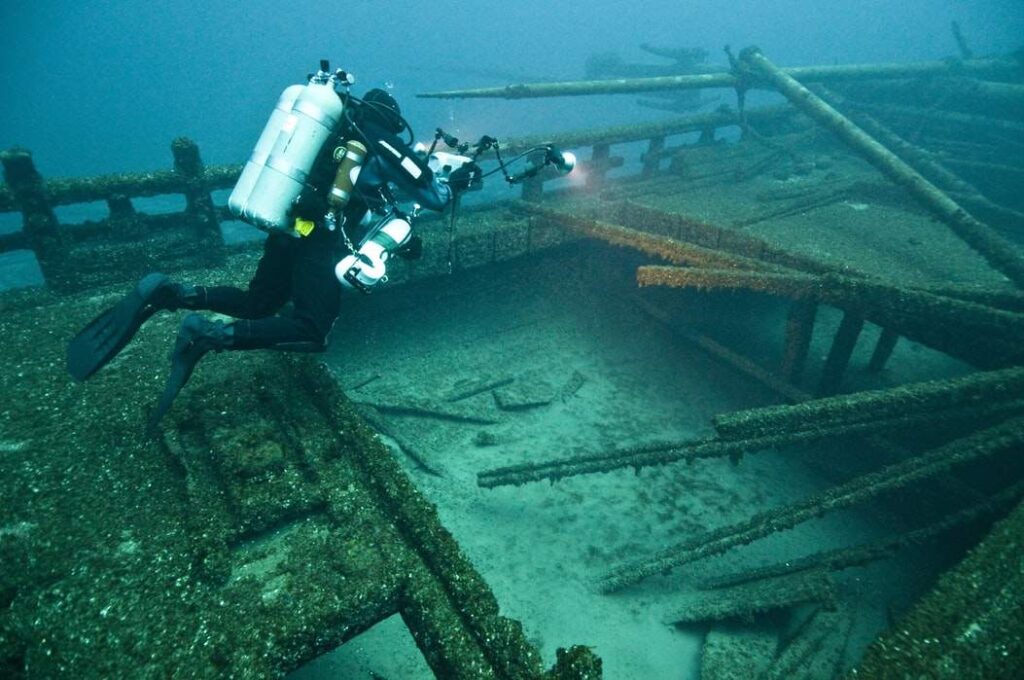
James Bond Wrecks
New Providence Island, Bahamas
Skill Level: Beginner
Expect to See: Shipwreck, coral, sea sponges, tropical fish, turtles, barracuda, lionfish
Water Temperature: 80 F (27 C)
There are two wrecks at the James Bond site and they are usually explored together. The Bahamas also offers another James Bond famous site called the Thunderball Grotto.
A Vulcan bomber plane was sunk during the 1965 film ‘Thunderball’. The plane has disintegrated a big but the frame remains. It was actually a mockup and not a real plane but fun nonetheless. I mean, James Bond was filming here in the 60s and 80s. Today, the frame sort of resembles a jungle gym
Tears of Allah is a 92-foot tugboat that used to transport supplies around the Bahamas. It was sold to production crews to be sunk for the 1983 film ‘Never Say Never Again’. Since the boat sits upright up the ocean floor it makes for some spectacular photo opportunities. There is also a large hole in the side of the boat that is large enough to fit through. Divers are permitted to enter and do a little exploring.
Visibility here usually ranges from 50-130 feet (15-40 m) and the dive site is in relatively shallow water. This makes it great for beginners or anyone looking for an easy wreck dive.
As with all diving, be respectful and do not damage or remove anything. Fire coral is present in the area so it’s especially vital not to touch any coral.
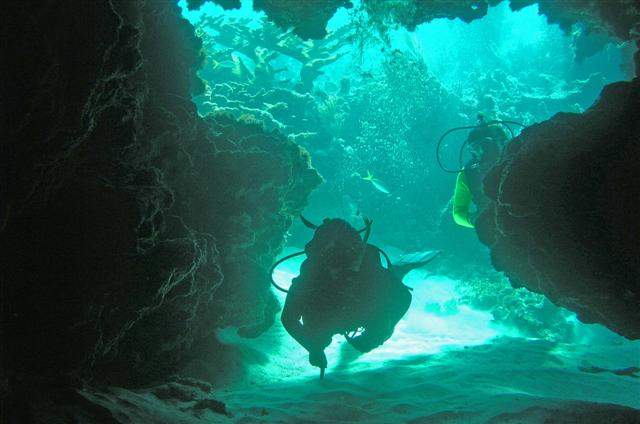
Green Turtle Cay
Acabo Islands, Bahamas
Skill Level: Beginner and up
Expect to See: Coral, grouper, snapper, lobster, caverns, tunnels
Water Temperature: 83 F (28 C)
There are two noteworthy sites at Green Turtle Cay with the first being Coral Caverns. You will find tall pillar-like coral and swim through twisting tunnels and caverns. The coral formations are unique and very interesting to explore. They are referred to as relief spurs and groove formations, Depth ranges from 7-50 feet (2-15 m) and there is plenty of marine life swimming around the site.
The next is called The Original Tarpon Dive where you can dive with tarpon and hand-feed grouper. This dive maxes out at 50 feet (15 m) so it’s open to all levels of divers.
Visibility is normally very good at both locations so expect 98 feet (30 m).
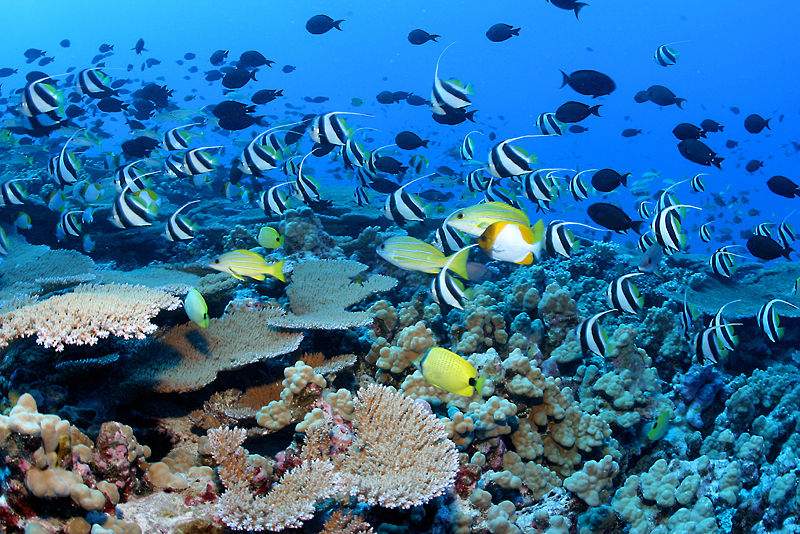
Fish Hotel
Paradise Island, Bahamas
Skill Level: Beginner
Expect to See: Coral, sea fans, tropical fish, trumpetfish, grunts, eel, crabs, lobsters
Water Temperature: 77-88 F (25-31 C)
With a name like Fish Hotel, there is a certain level of expectation and you will not be disappointed. This site is packed with colorful schools of fish and plenty of crevices. The base of the reef is limestone and there are many types of hard and soft coral formations branching off.
The many undercuts and ledges make for perfect hiding spots and a fun game of hide-and-seek.
Visibility is insanely good and almost always stays around 150 feet (46 m). The current can sometimes be strong so just be mindful of that.
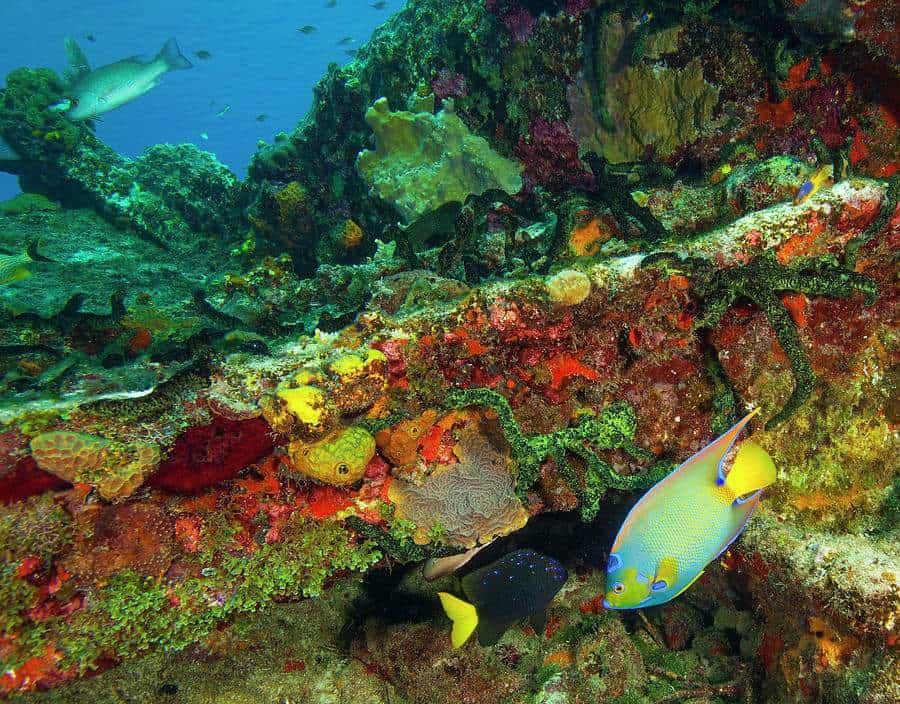
Sugar Wreck
Grand Bahama Island, Bahamas
Skill Level: Beginner
Expect to See: shipwreck, coral, snapper, crabs, pufferfish, stingrays, tropical fish
Water Temperature: 76-85 F (24-29 C)
Sugar wreck is located on the west end of Grand Bahama Island. It was a sailing ship that sank in 2000 during a monsoon while transporting sugar through the Caribbean.
The wreck lays 20 feet (6 m) below the surface and is great for beginners. There is an abundance of marine life including snapper, angelfish, and parrotfish. Saying that there is a lot of fish here is an understatement. You’ll be happily swimming through schools of fish or maybe they’ll be swimming through you. Sharks are also sometimes seen throughout the wreckage.
There is said to be a loggerhead turtle that lives around the wreck so keep an eye out for that mystical guy. Visibility is good and ranges from 70-80 feet (21-24 m). The current is sometimes strong here so be prepared.
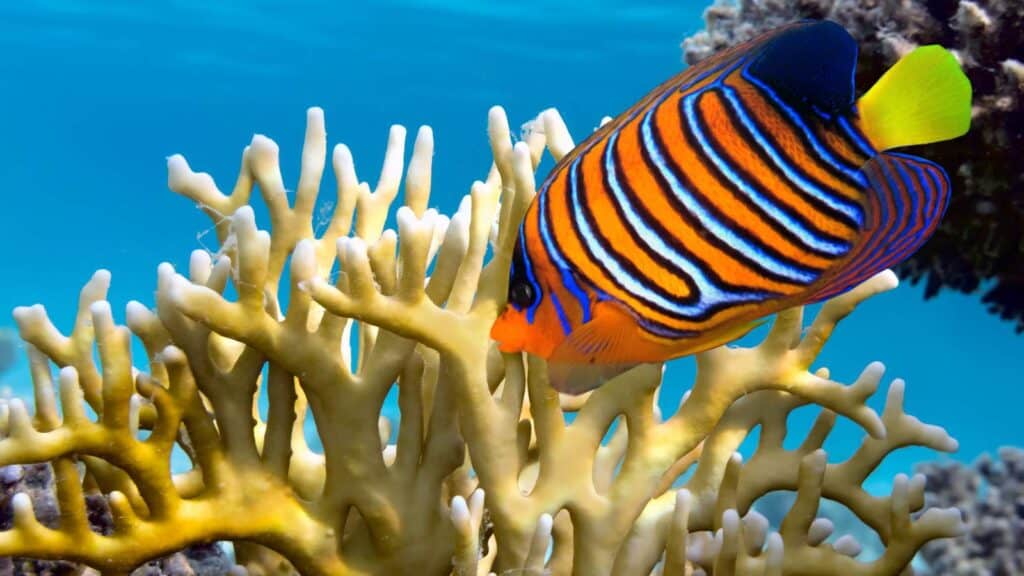
Victory Reef
Bimini Island, Bahamas
Skill Level: Intermediate and up
Expect to See: Coral, sea sponges, tropical fish, turtles, rays, sharks, snapper, grouper, barracuda, tuna, lobsters, caves, swim-throughs, tunnels
Water Temperature: 80-88 F (27-31 C)
Victory Reef is a 5-mile (8 km) long sloping reef at the edge of the Gulf Stream. The reef slants from 30-80 feet (9-24 m) deep with countless regions to explore. It is regarded by many as the best diving location in the Caribbean. The area is packed with colorful schools of fish and healthy coral reefs.
There is plenty of topography to explore including caves, tunnels, cliffs, and canyons. The reef itself is very long and several areas have tall and unusual reef growth. You can expect to pass through a sea sponge garden and there are too many photo opportunities to count.
Since Victory Reef is located at the edge of the Gulf Stream the current is sometimes very strong. Factoring in the strong current the majority of dives here are drift. Expect visibility to range from 32-98 feet (10-30 m).
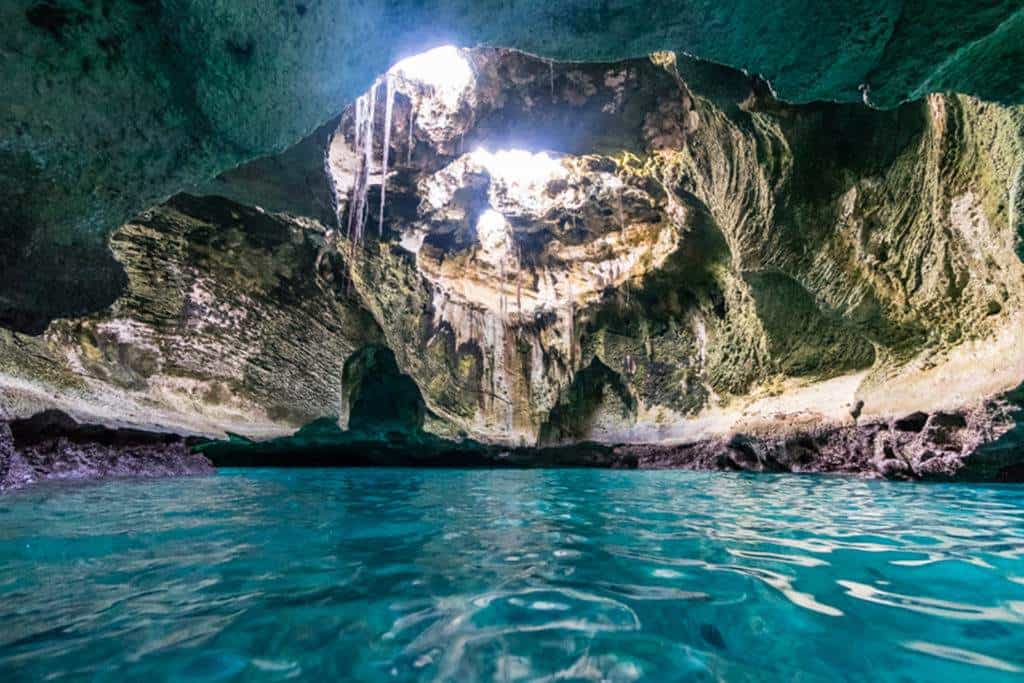
Thunderball Grotto
Exuma Keys, Bahamas
Skill Level: Beginner
Expect to See: Rays, nurse sharks, coral, tropical fish, yellow-tailed snapper, angelfish, cave, tunnels
Water Temperature: 84-87 F (29-30 C)
Ever thought about diving into a secret grotto that happens to be a little bit famous? Well, prepare to check it off your list because this site will more than satisfy you.
Thunderball Grotto is an underwater cave where two James Bond movies filmed. The 1965 James Bond movie ‘Thunderball’ was filmed here and then in 1983 the James Bond movie ‘Never Say Never Again’ was also filmed here.
There are lots of fish in the area and the water is crystal clear. The current is a little strong right outside of the cave so it might take a little effort to swim in. There is also some coral around the entrance of the cave and you can often see nurse sharks roaming around.
Inside the cave, you will also see lots of colorful coral formations and many schools of fish. Beams of light shine through openings in the ceiling which bounce water reflections throughout the cave.
Do be mindful of your head as the cave varies in height. Snorkelers are welcome but make sure you check the tides before going. It’s best to go during low tide if you are snorkeling. It can get crowded with tours but going as early as possible is recommended to avoid this.
